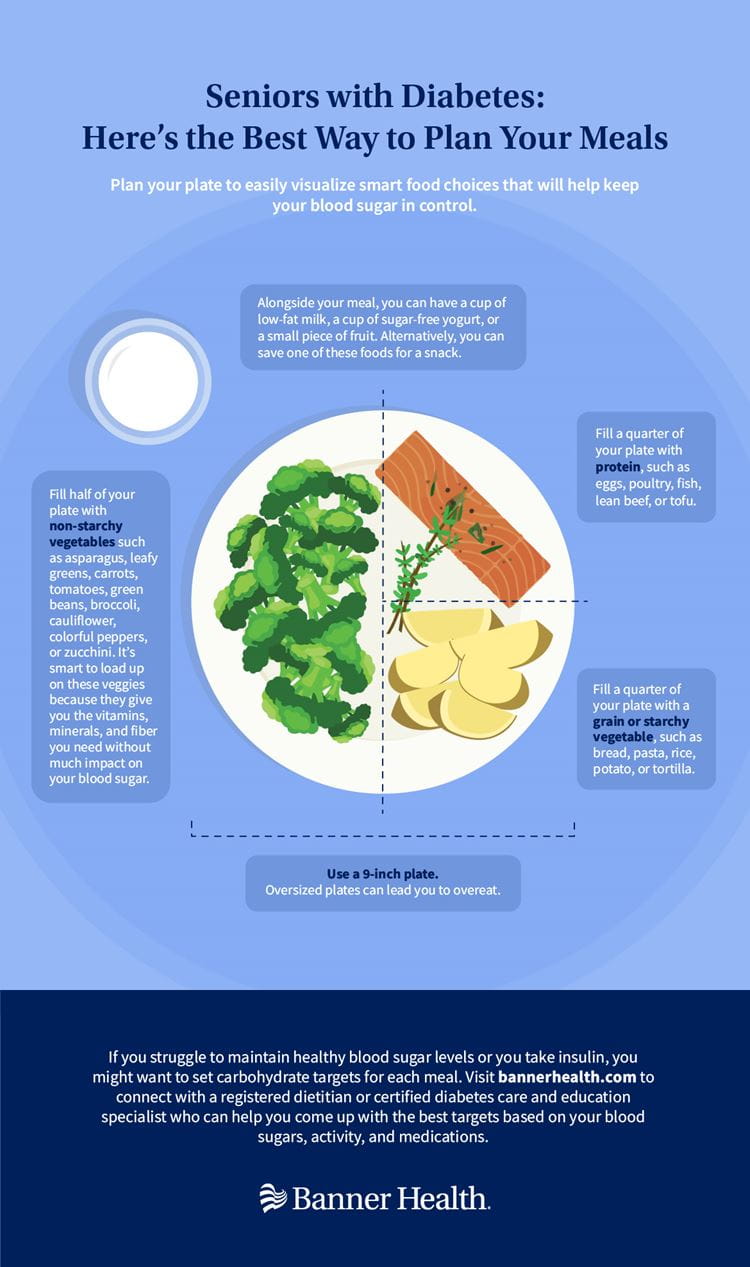If you have diabetes, as you get older it can be tough to make sure your meals give you the nutrition you need—and the flavors you want—while keeping your blood sugar in control.
“Older adults often need to balance various health concerns that require different diet modifications. Putting everything together can be challenging,” said Tracy Garrett, a registered dietitian and certified diabetes care and education specialist with Banner Health’s Population Health Management in Arizona.
If you’re a senior with diabetes, you may need to:
- Balance your carbohydrate intake
- Reduce your sodium levels
- Increase the amount of fiber you eat
You also have to pay attention to other lifestyle changes that can impact your diabetes. For example, if you don’t have much of an appetite you might be tempted to skip meals, which could lead to low blood sugar levels, especially if you’re taking certain medications. Or, if you become less physically active you may gain weight, which can make it harder to manage blood sugar levels.
With diabetes, the most important thing to focus on in your diet is your carbohydrate intake, since that’s what will impact your blood sugar the most. “Many healthy foods contain carbohydrates,” Garrett said. “You don’t need to eliminate them, but you may need to eat smaller portions.”
Those foods include:
- Grains
- Fruit and fruit juices
- Milk and yogurt
- Starchy vegetables such as corn, potatoes, peas and dried beans
- Sweets and desserts
For a helpful guide on how to plan out your meals and ensure you’re striking the right portion balance, see below infographic.
The American Diabetes Association’s Diabetes Food Hub is a good resource for blood-sugar- and heart-health-friendly recipes. The association’s Easy Pantry Recipe category features recipes that are easy to put together with ingredients you probably have on hand. Recipes come in a range of serving sizes. Some serve two to four people, so you don’t end up with lots of leftovers. Others serve more, so you can freeze individual servings for effortless meals in the future.
When you can’t cook, you can turn to a premade frozen meal in a pinch. Garrett recommends choosing one that has less than 500 milligrams of sodium and 30 to 45 grams of total carbohydrates. You can add another half cup or more of non-starchy vegetables, since these meals tend to skimp on veggies. Frozen veggies are easy to add. You can also add a half cup of unsweetened fruit or dairy if you like.
When it comes to managing your diabetes, you don’t have to go it alone. Banner Health can help you learn how to survive and thrive with diabetes. You can download the Living Well with Diabetes e-book, view the Diabetes Adult Education App, and connect with comprehensive diabetes care.
For more ways to help control your diabetes through diet, connect with a registered dietitian. Visit bannerhealth.com to find a specialist near you.



